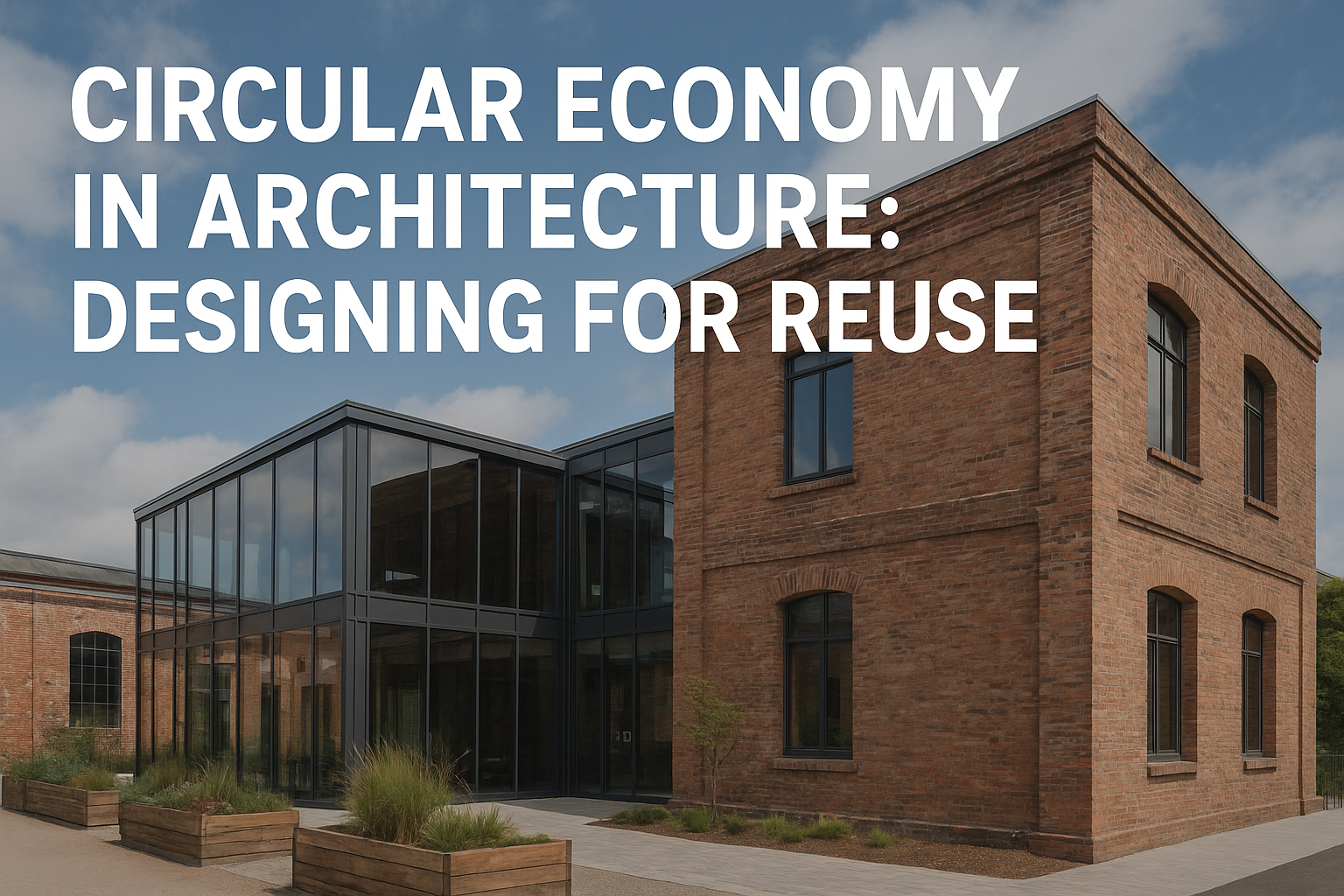Circular Economy in Architecture — Designing for Reuse
In an era of environmental crises and resource scarcity, architecture can no longer focus solely on creating beautiful spaces; it must also become part of the solution. The concept of the Circular Economy offers precisely that — a framework where buildings are seen not as disposable products but as material and spatial banks, whose components can re-enter the design and construction cycle.
This article explores how circular economy principles can be applied in architecture, presents European examples, and examines how reuse of materials and spaces can shape a more sustainable future for the building industry.
Designing for Reuse
In traditional architecture, buildings were often designed with a “build and forget” mindset. In contrast, the circular economy aims to ensure that structures are designed for disassembly, repair, and reuse from the very beginning.
Key design principles include:
- Design for Disassembly: Components should be chosen so that they can be separated without damage and reused in new projects.
- Modularity: Using modular systems allows parts of a building to be rearranged or relocated easily.
- Multi-life Spatial Planning: Layouts and structures should be adaptable to different uses over time (residential, office, cultural, etc.).
In recent Dutch and German projects, architects increasingly rely on dry joints, bolted connections, and prefabricated panels that allow for reconstruction or relocation — minimizing demolition waste.
Circular Materials and Systems
In circular architecture, materials are no longer “waste.” They are assets meant to remain in the loop.
Key strategies include:
- Recycled Materials: Reclaimed bricks, recycled concrete, and salvaged timber from existing buildings.
- Bio-based and Renewable Materials: Engineered wood, plant-fiber panels, and natural insulation.
- Material Passports: Digital identification systems that track the origin, properties, and reusability of each building component.
With the help of Building Information Modeling (BIM) and Artificial Intelligence, these strategies enable smarter material management and minimize waste throughout the lifecycle of a building.
European Case Studies
Europe is leading the transition toward circular architecture. Some notable examples include:
- Circular Pavilion, Brummen (Netherlands): Every element of this office building — from its steel frame to the wooden façade — can be dismantled and reused without generating waste.
Image – Brummen Town Hall – www.ellenmacarthurfoundation.org - Madaster Platform (Germany / Netherlands): A digital registry that assigns each building a “material profile,” preserving the value of its components even after demolition. www.madaster.com
- Urban Mining Initiatives: In Berlin and Zurich, architects are reclaiming materials from old buildings to construct new ones — effectively “mining” the city for resources. urban-mining-index.de
These projects demonstrate that circular design is not a theoretical concept, but an evolving practice already reshaping the architectural landscape.
Opportunities and Challenges
Opportunities:
- Reduced Construction Waste: The construction sector generates about 40% of global industrial waste — circular design can drastically reduce this figure.
- Long-term Economic Benefits: Although initial costs may be higher, reusing materials and minimizing waste lead to long-term savings.
- Urban Resilience: Cities can rely on their own material resources rather than imports.
Challenges:
- Lack of Recycling Infrastructure: Effective material recovery systems are still limited.
- Cultural Resistance: The construction industry often hesitates to adopt new design models.
- Regulatory Barriers: Many reused or recycled materials lack formal certification or standards.
Conclusion
The circular economy in architecture is more than just recycling — it’s a design philosophy for the future. In this approach, buildings are not the end of the process but the beginning of new cycles of value and sustainability.
As awareness of environmental responsibility grows, architecture firms — including Aron Studio — can play a vital role in advancing this transformation.
By combining creative design, digital technology (BIM, AI), and circular thinking, the next generation of architecture can be beautiful, intelligent, and sustainable.




